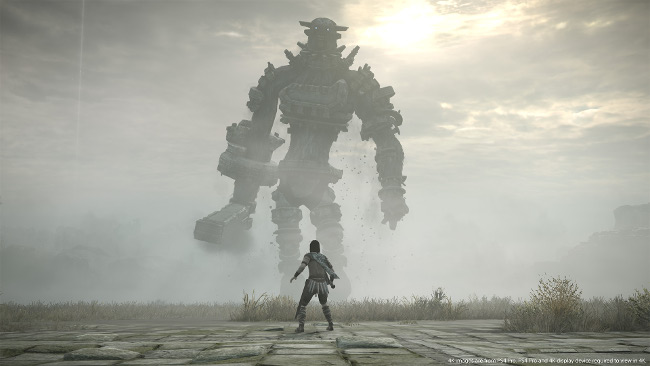
It’s easy to forget that it’s only on this thin rind of human history that art is relatively accessible to everyone. Netflix, ebooks, Spotify, and a host of other technologies put the entire history of any art form at our fingertips. Recently, remaster- and rebuild-mania in the game industry has meant cult titles and major hits alike get a burnishing and a second chance at life.
But video games are unique as art forms, where the rules that dictate the art and story are the art. It’s one thing to intellectually understand why seeing a brushstroke on a painting is important and another to make the painting yourself, and where Shadow Of The Colossus (PS4, $50, available today) starts to feel dated is when you pick it up and play it.
As everyone knows by now, the plot is simple. There’s a hero, a horse, a comatose princess, 16 colossi to find and kill, and that’s pretty much it. Aside from killing the local wildlife, all you do is hunt down the various colossi, vast creatures that are essentially platforming puzzles as you figure out how to climb them and stab them to death. It’s all a very solemn, atmospheric story, where it’s not clear that the colossi are really all that bad or that you’re doing anything that’s a net positive to this barren world.
The PS4 game isn’t a remaster, but a complete rebuild from the ground up, and yes, it’s absolutely stunning. It looks good, it sounds good, and, in the tradition of these games, it’s still somewhat annoying to play. The controls are better than the original, mind you, and everything that makes this game hard to play is there for a reason. You don’t automatically climb up ledges outside of combat, because you’re supposed to feel every tug and pull of climbing a ledge. Falling off a colossus and having to do the same complicated sequence all over again is supposed to be aggravating. But understanding this intellectually doesn’t make any of it any less irritating.
There’s a certain critical tradition this aligns with called “cultural vegetables”, which maintains true art is a joyless and boring slog that you engage with not to have fun, but to better yourself as a person. And to a degree, that’s a fair point. Shadow of The Colossus is an influential game, and even a great story, much like its art-game compatriot Dear Esther. Playing it lays bare how game design fundamentally changed, and it’s fascinating, on an anthropological level, to track how seismic it was.
But while it’s fair to argue art doesn’t have to be fun all the time, it’s also fair to argue that art needs to be engaging in some way. Hellblade: Senua’s Sacrifice, arguably one of this game’s heirs, is not a “fun” game by any stretch of the imagination, but you’ll never forget it.
Where Shadow Of The Colossus, falls down is that it demands that you fill in all the blanks with your own thoughts, and then makes it annoying to do what it asks of you. As a historical piece, or a method to think about game design, it remains fascinating. But as a game, separate from its history, it’s more a piece to be admired than one you’ll want to play.
This review was written with review code provided by the publisher.
